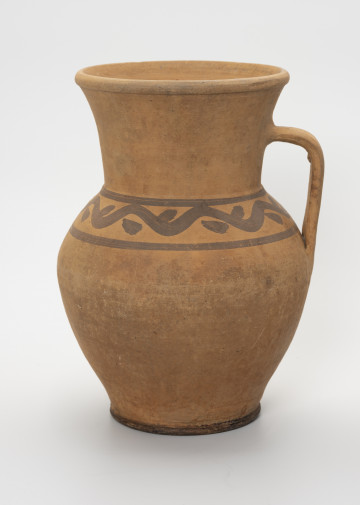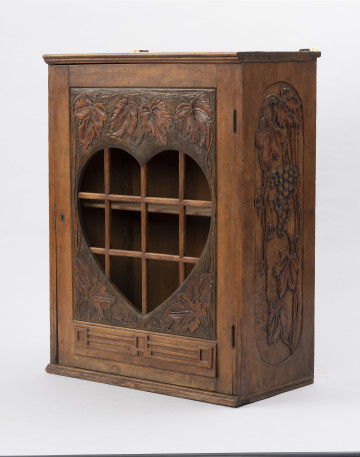
Jug
1890 — 1915
National Museum in Szczecin
Part of the collection: Folk ceramics
The slender cylindrical bottle belongs to the type of flask-like vessels used for storing water, wine, vodka, mead, as well as oil and paraffin. The production of such vessels requires great skill on the part of the potter. In order to obtain the characteristic slender shape and straight cylindrical belly supported by a small diameter bottom, the clay must be pulled upwards all the time while the vessel is being bored on the wheel, and then, in order to form the neck, the excess raw material must be gently gathered up and the vessel tapered sharply, forming a thickened neck spout. Many vessels were made of stoneware because of the special properties of this type of pottery, which is a mixture of clay, chamotte and quartz sand fired at high temperatures. It is a material with high mechanical strength and is resistant to seepage and acids. Stoneware products were known as far back as antiquity; however, they gained popularity in the 18th century. Even today, stoneware is used to make crockery, ceramic tiles for various applications and even sewer fittings. In Poland, stoneware factories are mainly located in the Sudetes foothills, although the most famous are those in Bolesławiec. The piece on display, glazed in light grey, has no trademarks or other manufacturer's markings. It comes from the village of Czelin in the Gryfice district. It came into the museum collection thanks to a donation by a private individual in the 1970s. Iwona Karwowska
Author / creator
Object type
bottle
Technique
throwing (pottery technique), glazing
Material
stoneware
Origin / acquisition method
donation
Creation time / dating
Creation / finding place
Owner
Muzeum Narodowe w Szczecinie
Identification number
Location / status

1890 — 1915
National Museum in Szczecin

1880 — 1910
National Museum in Szczecin

1762 — 1770
National Museum in Szczecin
DISCOVER this TOPIC
Museum of King Jan III's Palace at Wilanów
DISCOVER this PATH
Educational path